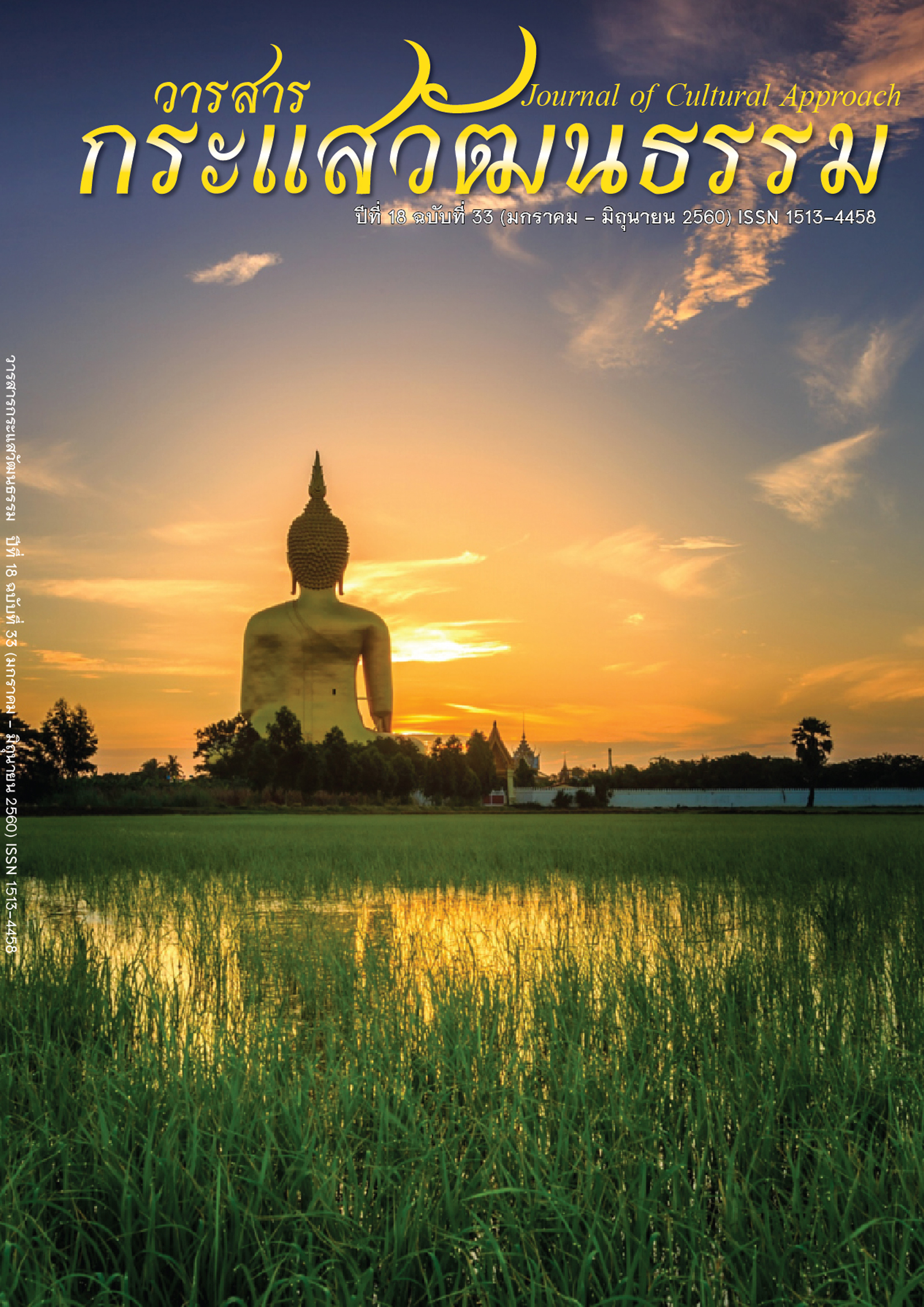อัตลักษณ์ในเอกลักษณ์ : พิพิธภัณฑ์ประวัติศาสตร์แห่งชาติญี่ปุ่น
Main Article Content
บทคัดย่อ
“พิพิธภัณฑ์ประวัติศาสตร์แห่งชาติญี่ปุ่น” ใช้ชื่อภาษาญี่ปุ่นว่า 国立歴史民俗博物館 และชื่อภาษาอังกฤษที่เป็นทางการว่า National Museum of Japanese History ตั้งอยู่ที่เมืองซากุระ จังหวัดชิบะ รัฐบาลญี่ปุ่นสร้างพิพิธภัณฑ์แห่งนี้ขึ้นเนื่องในวาระครบรอบ 100 ปีแห่งการปฏิรูปประเทศสมัยเมจิ โดยเปิดให้บริการเป็นครั้งแรกในปี ค.ศ. 1983
พิพิธภัณฑ์แห่งนี้เป็นที่เดียวในประเทศญี่ปุ่นที่มีลักษณะเฉพาะเป็นเอกลักษณ์สำคัญ คือ เป็นพิพิธภัณฑ์ประวัติศาสตร์แห่งชาติ เป็น “สถาบันการวิจัยระหว่างมหาวิทยาลัย” ด้านประวัติศาสตร์ และเป็นศูนย์กลางการศึกษาประวัติศาสตร์ โบราณคดีและวิถีชีวิตขนบธรรมเนียมพื้นบ้าน
จากลักษณะเฉพาะดังกล่าวมีส่วนทำให้พิพิธภัณฑ์มีวิธีการและเลือกเรื่องราวที่จะนำเสนอในรูปแบบที่น่าสนใจคือ มีข้อมูลที่หลากหลาย มีหลักการทางวิชาการมากกว่าที่อื่น และให้ความสำคัญกับคุณค่าทางวัฒนธรรมและวิถีชีวิตคนในสังคม ภาพประวัติศาสตร์ที่ปรากฏในการจัดแสดงจึงไม่ใช่ภาพวีรกรรมความกล้าหาญของบรรพบุรุษท ของผู้ปกครอง หรือของกลุ่มอำนาจ แต่เป็นภาพวิถีชีวิตที่เป็นสามัญของผู้คนทุกกลุ่มที่อยู่ร่วมกันบนเกาะญี่ปุ่น สะท้อนให้เห็นว่าคนทุกกลุ่มคือผู้ที่สร้างและพัฒนาวิถีชีวิต วัฒนธรรม ประเพณีของตนเองจนเป็นอัตลักษณ์ของชาติในปัจจุบัน
Article Details
Proposed Creative Commons Copyright Notices
1. Proposed Policy for Journals That Offer Open Access
Authors who publish with this journal agree to the following terms:
- Authors retain copyright and grant the journal right of first publication with the work simultaneously licensed under a Creative Commons Attribution License that allows others to share the work with an acknowledgement of the work's authorship and initial publication in this journal.
- Authors are able to enter into separate, additional contractual arrangements for the non-exclusive distribution of the journal's published version of the work (e.g., post it to an institutional repository or publish it in a book), with an acknowledgement of its initial publication in this journal.
- Authors are permitted and encouraged to post their work online (e.g., in institutional repositories or on their website) prior to and during the submission process, as it can lead to productive exchanges, as well as earlier and greater citation of published work (See The Effect of Open Access).
Proposed Policy for Journals That Offer Delayed Open Access
Authors who publish with this journal agree to the following terms:
- Authors retain copyright and grant the journal right of first publication, with the work [SPECIFY PERIOD OF TIME] after publication simultaneously licensed under a Creative Commons Attribution License that allows others to share the work with an acknowledgement of the work's authorship and initial publication in this journal.
- Authors are able to enter into separate, additional contractual arrangements for the non-exclusive distribution of the journal's published version of the work (e.g., post it to an institutional repository or publish it in a book), with an acknowledgement of its initial publication in this journal.
- Authors are permitted and encouraged to post their work online (e.g., in institutional repositories or on their website) prior to and during the submission process, as it can lead to productive exchanges, as well as earlier and greater citation of published work (See The Effect of Open Access).
เอกสารอ้างอิง
[2] Ministry of Education, Culture, Sports, Science and Technolugy – Japan. (n.d.). Inter-University Research Institute Corporation. Retrieved from: http://www.mext.go.jp/en/about/relatedsites/title01/detail01/ 1373968.htm.
[3] Ministry of Education, Culture, Sports, Science and Technolugy – Japan. (n.d.). Statistic about Education in the Society. Retrieved from: http://www.mext.go.jp/b_menu/toukei/chousa02/shakai/index.htm. (in Japanese)
[4] National Museum of Japanese History. (2001). The Story from the Remains of Samurai Residence, Sakura Castle. Chiba: History Museum Promotion Association. (in Japanese)
[5] National Institutes of Natural Sciences. (n.d.). Inter-University Research Institute. Retrieved from: https://www.nips.ac.jp/eng/profile/about_Inter-University.html.
[6] National Museum of Japanese History. (2014). Thirty Years History of National Museum of Japanese History. Chiba: Seibunsha. (in Japanese)
[7] National Museum of Japanese History. (2015). Inter-University Research Institute Corporation, National Institute for the Humanities. Chiba: NP. (in Japanese)
[8] National Museum of Japanese History Sakura Japan. (2015). National Museum of Japanese History Visitor’s Guide. Chiba: Foundation for Museums of Japanese History.
[9] National University Sokendai. (n.d.). About Sokendai. Retrieved from: https://www.soken.ac.jp/en/outline/, Sokendai The Graduate University for Advanced Studies.
[10] Social Education Center, Tokai University. (n.d.). What Kind of Museums are there?. Retrieved from: http://www.scc.u-tokai.ac.jp/sectu/guide/mu_categ.html. (in Japanese)
[11] Toshiro, I., & Tsuneyuki, M. (1987). Introduction to the Museum. 5th eds. Tokyo: Gakuensha. (in Japanese)
[12] Tsubakizaki Nobuya (椿阪 信弥). (2016, November 24). Interview. Deputy Chief of Executive Museum Project, National Museum of Japanese History.


